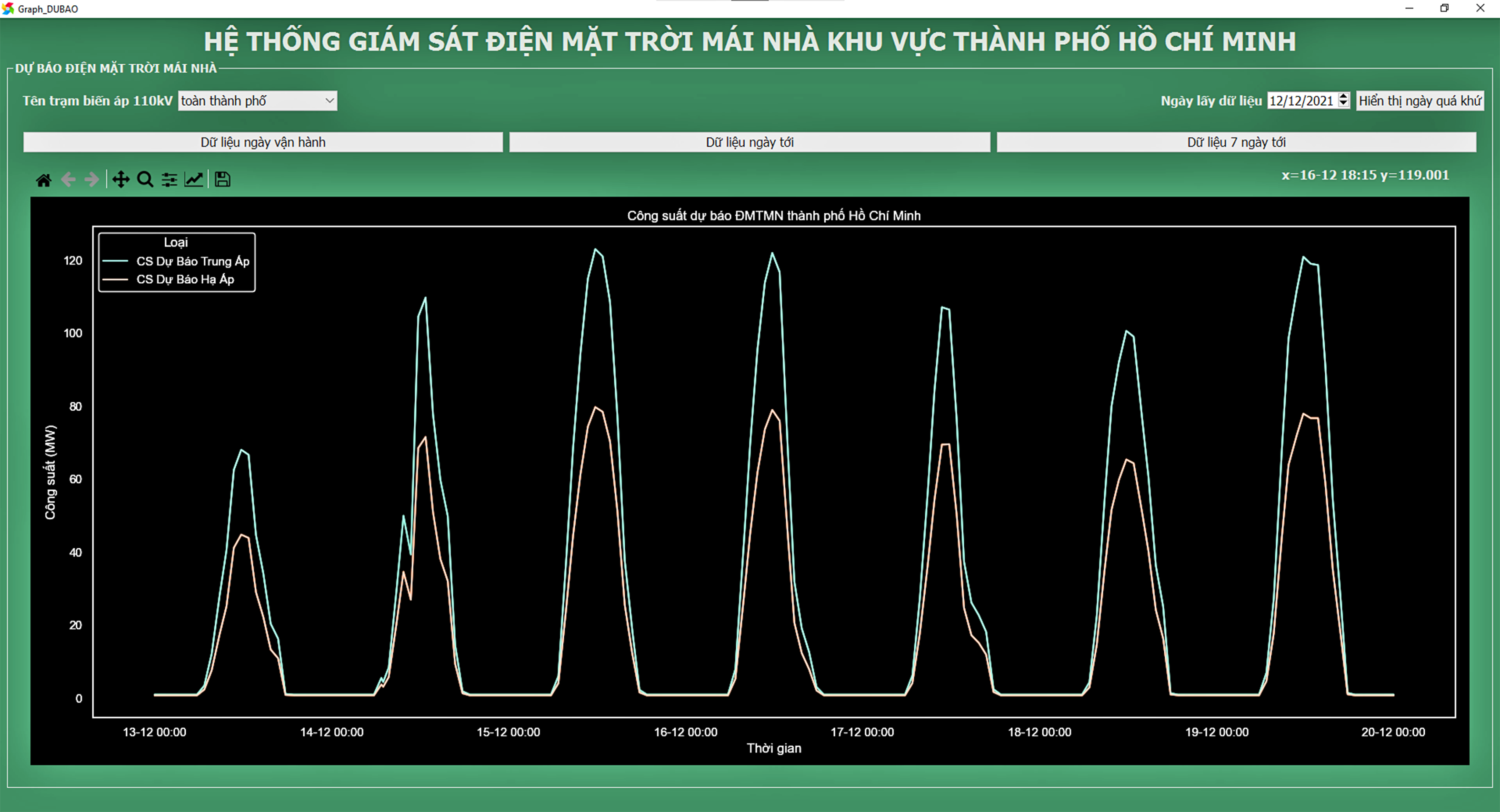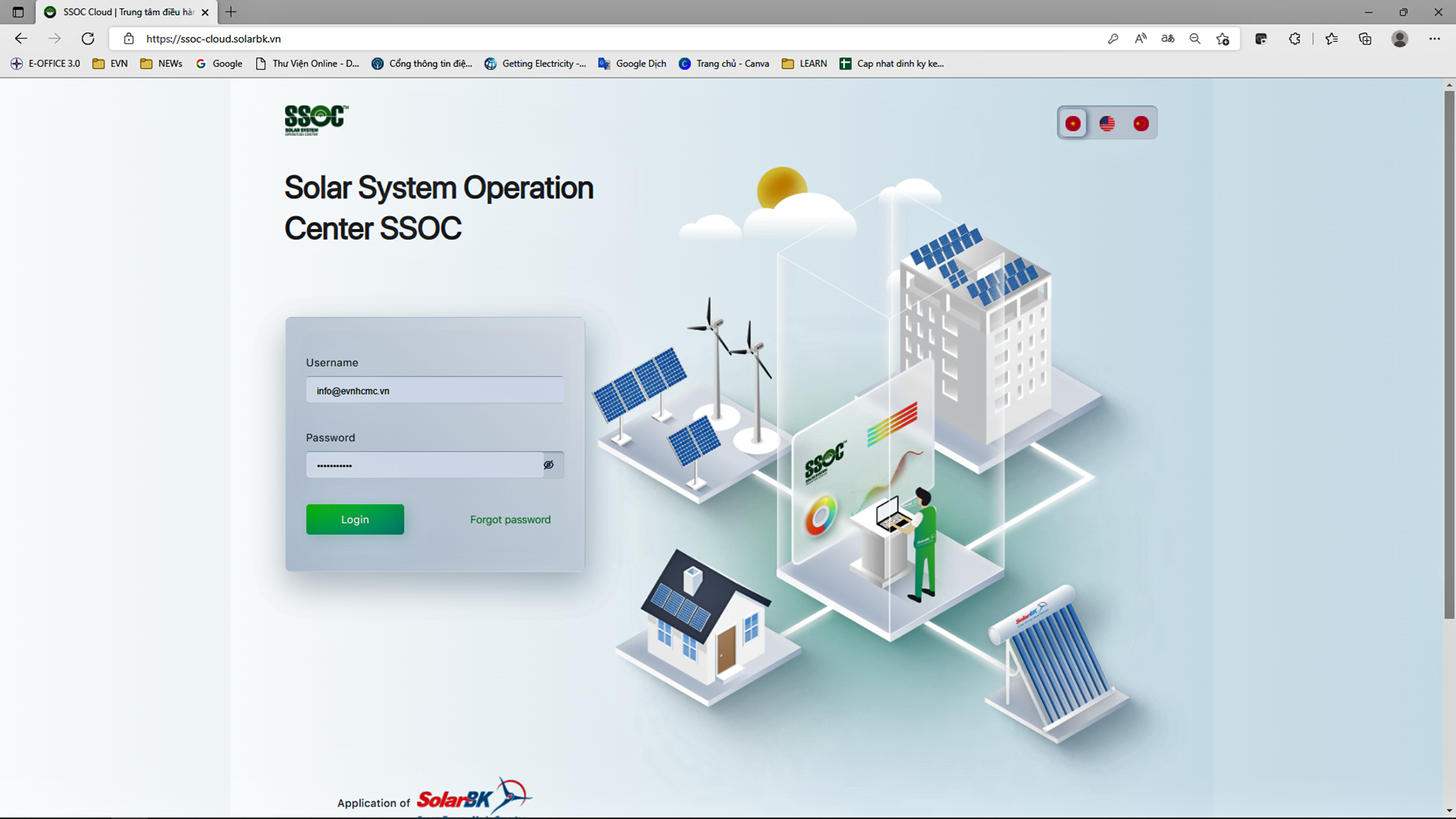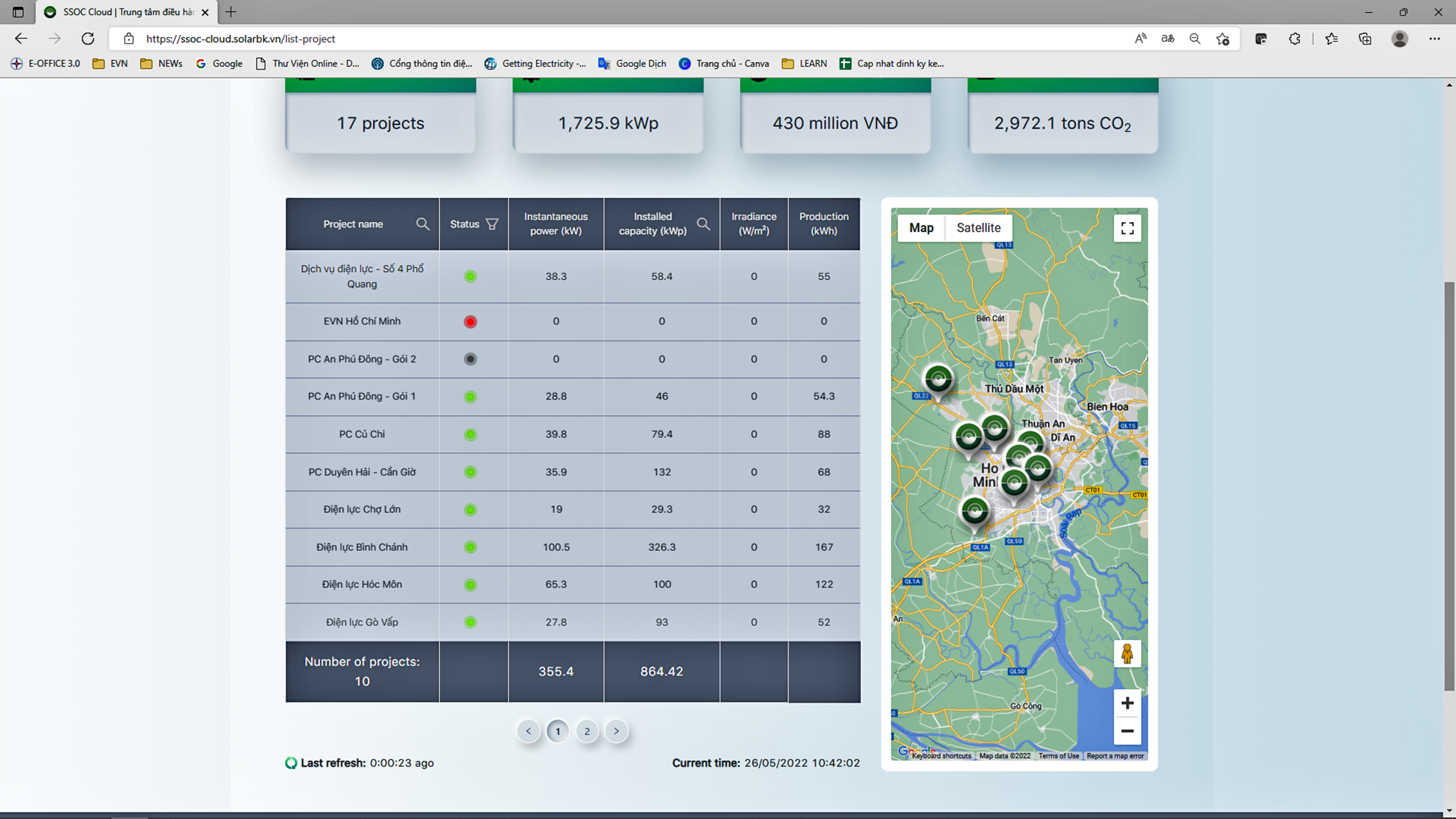Over the last two years, rooftop solar (RTS) has thrived in HCMC as 14,200 systems were utilized with an installed capacity of approx. 360MWp, powering 8-10% total demand of the City at high irradiation periods. The rapid development of RTS and a higher share of intermittent capacity represent novel difficulties in system operations, especially for the distribution network. A Distributed Energy Resources Management System (DERMS) which supports forecasting, monitoring and control of this new source of energy is the necessary answer for these challenges.
Recently, engineers from the National Load Dispatch Center (EVNNLDC) and EVNHCMC have jointly developed an RTS forecasting and control system for the HCMC region based on AI and machine learning solutions from Google. New technologies deployed in the system allow precise forecasting of RTS generation capacity using city-wide irradiation data, without needing to collect concurrent data for calculation from every metering point. Since meteorology observatory infrastructure in HCMC is currently not adequate, the required irradiation data has been sourced from Vietnam Nation Space Center (VNSC). The scientific method carried out by VNSC scientists involves dividing satellite image-based irradiation data into 2x2m2 segments. Based on this data, EVNNLDC engineers were able to create a high-resolution irradiation map that informs RTS generation calculations for HCMC.
The monitoring of generation capacity at output terminals of inverters relies mainly on the SCADA system’s HMI screens, which enables the assessment of the overall operating status of RTS systems. In addition, engineers have designed features to display forecasted data and historical post-operation data to aid the formulation of operational procedures for the power system and electricity market. Forecasts are made with a mean absolute deviation under 10%.
The system provides 5 key display features:
- Area-specific and total real-time RTS generation capacity parameters.
- Operating day data.
- Next day forecasted data.
- Next 7-day forecasted data.
- Historical data.


Figure 1: RTS monitoring system interface
For more empirical data to inform RTS monitoring and control and help improve power quality and reliability, in addition to the above forecasting and monitoring system, EVNHCMC has partnered with SolarBK to implement a monitoring and control program for a 3MWp capacity of RTS systems on its subsidies’ premises. This provides necessary practical inputs for the Corporation to ensure compliance with legal regulations regarding RTS monitoring, control and data collection, and inverter specifications.
The implementation of the program has produced many positive outcomes in terms of the monitoring and control system installed and software developed, namely:
- Completion of the solar power monitoring and control system based on software developed by SolarBK at https://ssoc-cloud.solarbk.vn

Figure 2: RTS monitoring and control software login screen

Figure 3: RTS monitoring and control software interface
- System testing successfully collected full-range data of RTS systems (with SMA inverters and BelinK data loggers) and met monitoring data requirements.
- System testing successfully controlled and recorded feedback data according to control scenarios (control of deployed capacities).
- Potential for development of additional features for future monitoring and control requirements of grid operators.
- Potential for incorporation of solar irradiation sensors for monitoring and assessing the correlation between irradiation parameters and RTS outputs, which will benefit forecasts of RTS generation.
- The system is able to monitor and control off-line generation capacity to supply local loads without feeding into the power grid.
- The SSOC software can link with data loggers from different vendors such as SMA, Huawei, Solar Edge, Sungrow, Growatt, ABB, Sofar, Outback; with meters from Mikro DPM, MFM, Vinasino, Schneider; and control inverters from SMA, Huawei, SolarEdge, Growatt, and Sofar.
- The software also has the potential to develop automatic reporting, sending reports via email to related parties.
The deployment of the RTS monitoring and control system is a step taken by EVNHCMC before proposing further solutions for Vietnam Electricity (EVN) to address power system stability in the context of increasing penetration of renewable energy, especially rooftop solar systems.
The RTS monitoring and control system for HCMC began operation in December 2021. Since then, it has facilitated more accurate monitoring of feed-in RTS generation capacity for EVNHCMC, and contributed to optimizing power system operations. The system has shown great compatibility with current grid operations and has the potential for new expansions to accommodate future needs. The system deployment brings significant implications for EVNHCMC in the pursuit of higher increases in the share of distributed generation, as well as securing the operation of a safe, uninterrupted, reliable, and economic power system, contributing to the Corporation’s overarching goal of developing a smart grid.
PV
Share